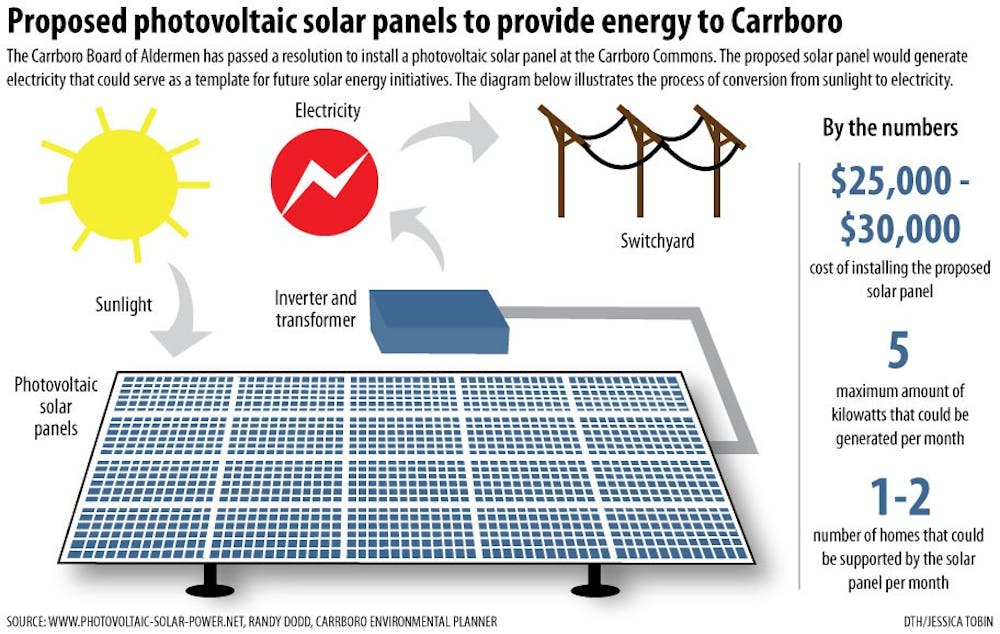“It’s something we’ve been interested in, but having the time to look into it has been one of the constraints,” Dodd said.
Research in hand, the town approached the Appalachian Institute for Renewable Energy to do a feasibility study and to help work with potential investors, he said.
Investment structure
The institute will do a cost-benefit analysis to ensure that those who fund the panel’s construction qualify for tax breaks that nearly equal their investment, said Rio Tazewell, a Carrboro native and the group’s outreach and education director.
Investors will collectively own the rights to the system for a set period of time, ideally five to six years. During that period, they can sell the energy the system generates to Duke Energy in order to recoup on their investment and make a small profit, Dodd said.
After that, they can either donate or sell the system back to the town at a low price. The town will not have to fund the start-up costs of the venture, but it will benefit from the panel, Tazewell said.
“The big push in doing a tax equity project is that these systems can ultimately be owned by non-profits and those non-profits don’t actually have to pay any money themselves,” Tazewell said.
Dodd said the town hopes to finish building the system in one tax cycle, so investors are able to receive the tax credit on their 2012 filing.
Alderman Sammy Slade said the system could be a good starting point for the town’s future investment in green energy.
“This could be an example and opportunity for us to look into thinking about green capital investment,” Slade said.
Dodd said the town could build future systems based off of the design to more significantly offset utility costs.
Solar energy in Chapel Hill
To get the day's news and headlines in your inbox each morning, sign up for our email newsletters.
While Carrboro plans for a solar-powered future, UNC has already paved the way for green energy on a larger scale.
Cindy Shea, director of the sustainability office at UNC, said PV solar panels like the one Carrboro is looking into are used at the University’s Visitor’s Center, at the Botanical Garden and at the Bell Tower parking deck. Morrison Residence Hall uses solar thermal energy panels.
The projects were completed in 2009, 2010 and 2007 respectively, Shea said.
“They seemed like good applications, given the building orientation and the quality of energy in writing that we were looking for,” Shea said.
Funding from student groups helped build the Bell Tower PV panels and part of the Morrison thermal energy panels.
Shea said the University plans to put a solar hot water system on the roof of Fetzer Gym as well, but the project has been delayed until the roof can be replaced.
Contact the City Editor at city@dailytarheel.com.




